Watch DART launch live here: November 24th, 2021 1:20 AM EST (5:20 UTC)
Planetary defense has been neglected for a while but finally, there is an awesome NASA mission called DART or Double Asteroid Redirection Test. The main purpose is to practice deflecting asteroids and the way we’re deflecting asteroids is by changing their orbit.
DART is unique in a lot of ways and it’s the first major planetary defense mission. It will fly to the asteroid Didymos first, which was discovered in the 90s and identified as a safe target. Then DART will crash a spacecraft into Didymos’ moon called Dimorphus and change its orbit by 1%. And I’m not only excited about this mission but also the fact this asteroid has a moon adds a sci-fi flavor as if we’re in a Star Trek episode.
You also don’t have to wait long! It’s launching on November 24th, 2021 aboard SpaceX’s Falcon 9, and arrives by September 26, 2022.
TL;DR Version?
- DART is a NASA’s first planetary defense mission to help us prepare for future asteroid threats by deflecting them
- DART will fly to the asteroid Didymos where it’ll crash into its moon Dimorphus to redirect the moon’s orbit
- This demonstration will be monitored before and after the test to understand how the moon’s orbit behaves around the asteroid
- Watch the launch of DART on November 24th at 1:20 AM – nasa.gov/live
- It’ll rendezvous with Didymos September 26, 2022
- ESA’s Hera mission will launch in 2024 to reach Didymos in 2026 to further analyze DARTs impact
There are a few mission objectives for DART and they are:
- Demonstrate a kinetic impact with Dimorphus
- Change the orbit of Dimorphus
- Use telescopes back on Earth to measure the orbit change before and after impact
- Measure the overall results of the impact as well as the efficiency of the deflection
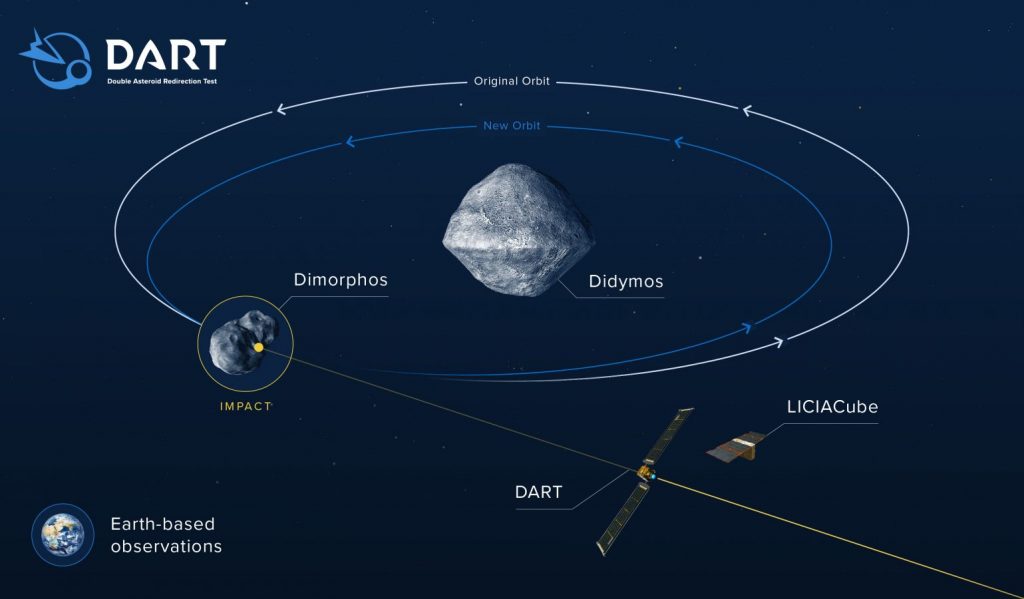
Let’s start from the top on why this is important and put it into context.
The Problems with Asteroids
Asteroids mostly mind their own business but sometimes they don’t. Even if they’re small they can still cause some major damage. In fact, one of the most well-recorded meteor strikes happened in Chelyabinsk Russia in 2013.
It injured 1,600 people and damaged 6 cities! The repairs cost about $30 million. The object was about 60 feet in diameter or 18 meters. Here is a video that compiled a ton of angles and footage but really the first 30 seconds of the video can send chills down your spine.
Today there are about 25,000 near-earth objects or NEO’s that are 500 feet or 140 meters in diameter. Don’t worry though these are being tracked and aren’t on a collision course with Earth. However, in the event that one does find its way to visiting Earth we need to deflect it. That’s where DART is a perfect mission where we can test this in our own “asteroid deflection lab.”
Now let’s take a closer look at the Didymos system itself and understand why we selected it.
The Didymos System and why we picked it
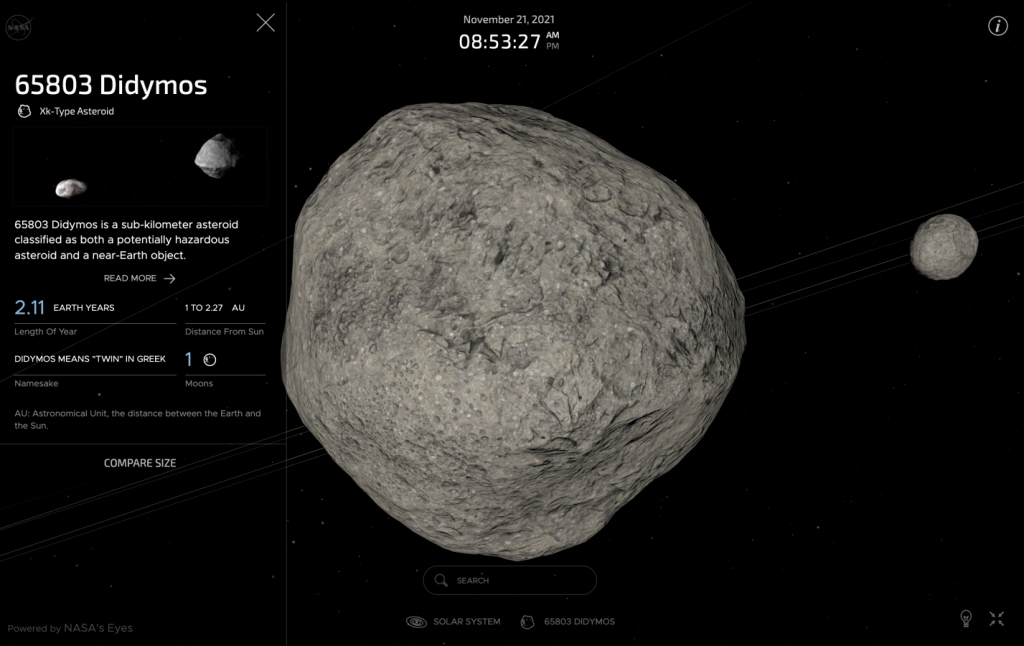
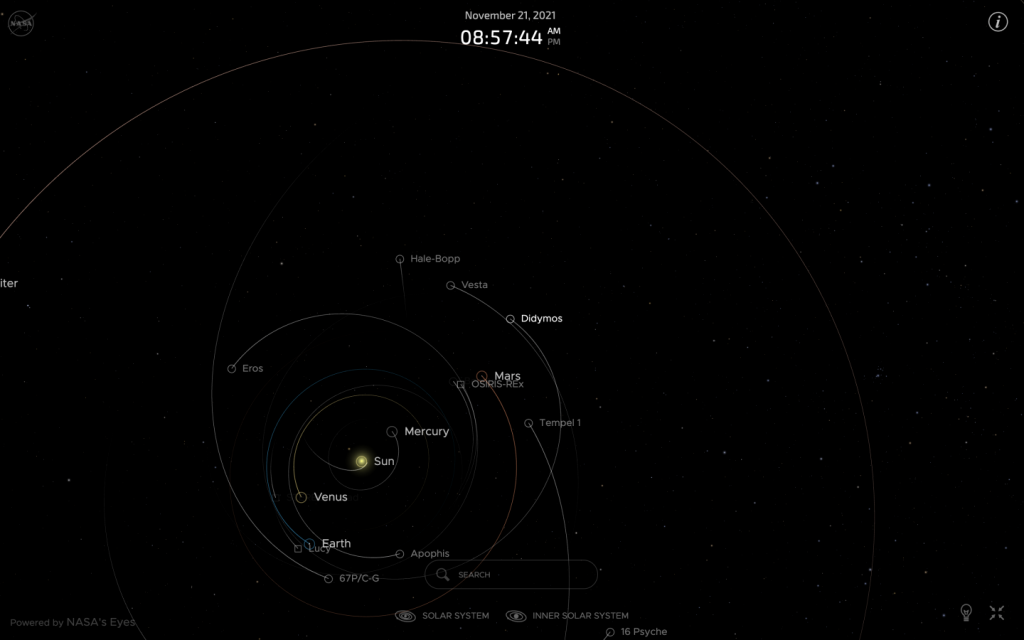
Didymos and Dimorphus aren’t huge asteroids compared to Vesta which is 262X bigger. However, why did scientists pick Didymos? Well, scientists scoured all sorts of asteroids and found that Didymos checked off every box.
First, many asteroids are hard to observe from Earth because they are just too faint to see. Didymos system can be observed by Earth ground-based telescopes consistently. Amazing. Check. Next.
Not only is the system observable from Earth but we can also see when Dimorphus move across Didymos or eclipses it. That acts like a cosmic stopwatch where you can time how long it takes to eclipse. Once the orbit has changed you will expect the eclipse to be shorter.
Finally, it needs to be at a safe distance away from Earth and still be observable. That’s another big check.
As a recap we are able to:
- Observe and monitor any changes to the asteroid and moon
- Learn and gain insights before and after the asteroid deflection technique
- Get those learnings in a relatively short amount of time (years) vs. decades
- Keep the experiment out of harms way or away from Earth in addition to everyting else above
We’re ready to run an experiment! Now, what do we equip this spacecraft with?
What do you take with you to an asteroid deflection mission?
DART has a lot of great instruments taking on board and will even have CubeSats on board that will take more measurements. The first thing you’ll notice about DART is its boxy shape.
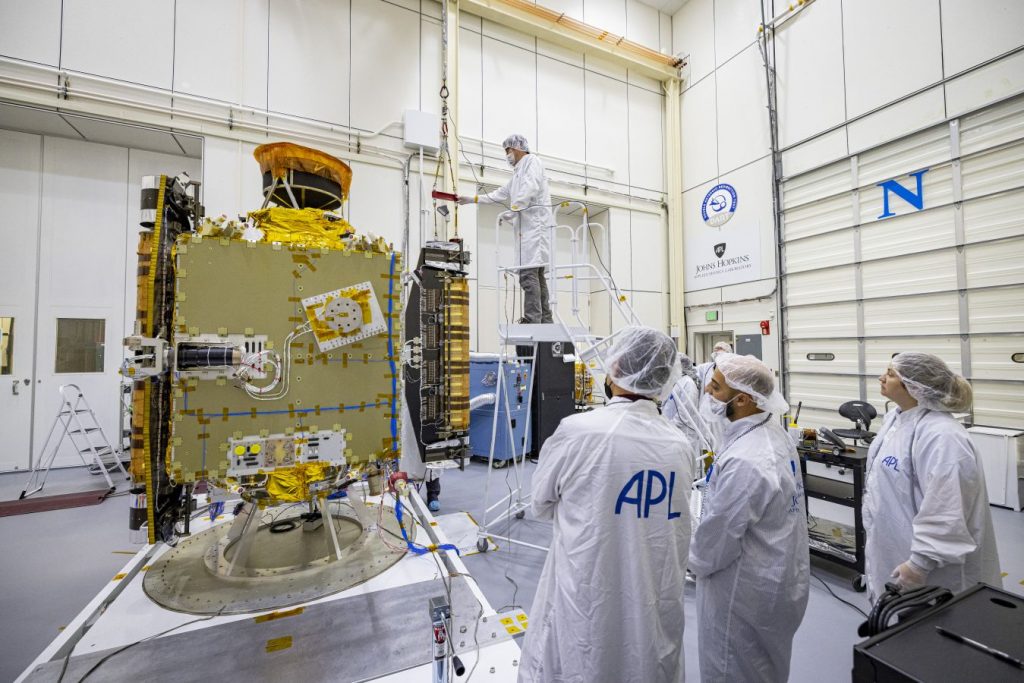
Credit: NASA
It also has two solar panels like wings which are the size of vending machines. What’s also cool about these is they have high efficient solar cells that are flexible. When DART is packed and onboard the Falcon 9 the solar panels will actually be curled up like this:
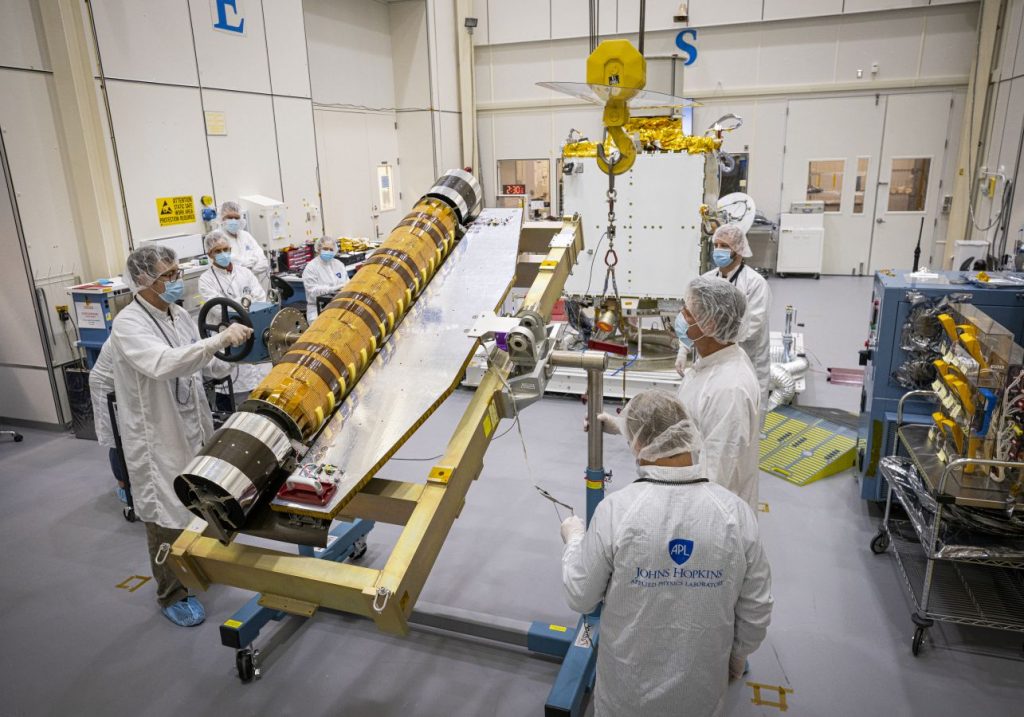
Credit: NASA/Johns Hopkins APL/Ed Whitman
DART will also bring DRACO or Didymos Reconnaissance and Asteroid Camera for Optical navigation. This is the same technology they used aboard the New Horizons spacecraft where it took the famous first up-close photos of Pluto.
It will also have two propulsion systems. The main hydrazine propulsion system, which has 12 mini thruster engines, will maneuver the spacecraft. The 2nd system is NASA’s Evolutionary Xenon Thruster– Commercial (NEXT-C). This is only there to demonstrate this would work as a propulsion system for future missions.
Another important instrument for this mission is the high-gain antenna to ensure that DART is pointed at the asteroid as well as sending data back to Earth in real-time.
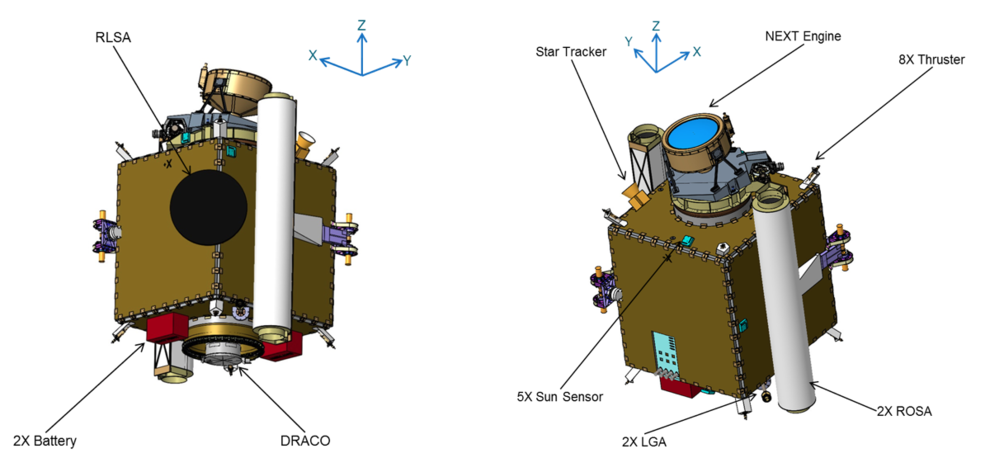
Credit: NASA
The Italian Space Agency gave us another important instrument called LICIACube. This cube satellite will have a special role where it’ll take enhanced photos of DART crashing into the moon and also have thrusters that will make any corrections as needed.
Okay, now that we have our instruments that will help make this mission successful what will happen after the impact.
The Mission Continues – Enter Hera Mission
This is the European Space Agency’s contribution to this planetary defense mission and it’s called Hera. What Hera will do is analyze DART’s impact more closely as well as the Didymos and Dimorphus.
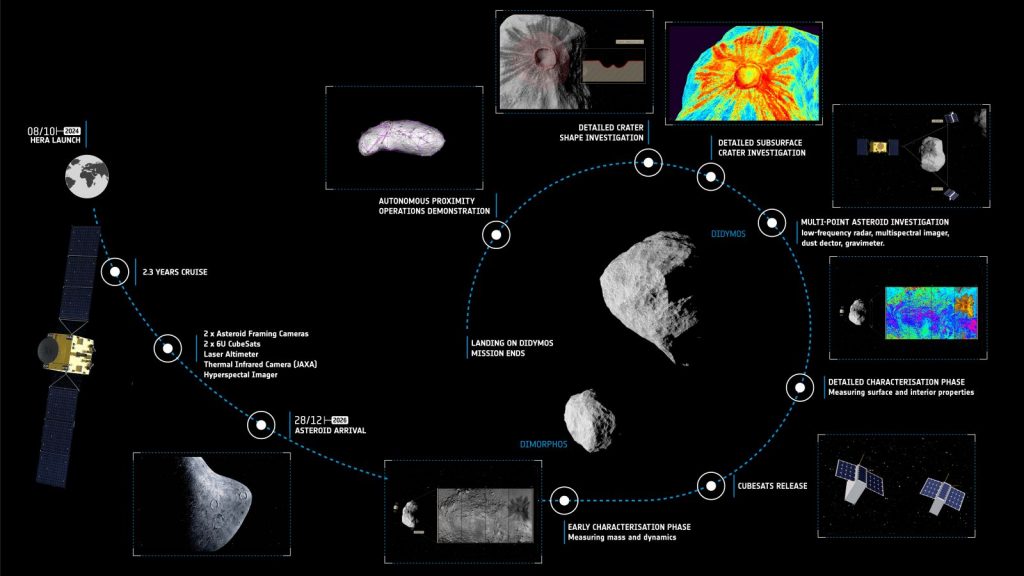
Credit: ESA
Hera will launch in 2024 and arrive by 2026. It’ll first calculate the mass of the asteroid to understand what’s inside of it. Then it’ll send cube satellites to land on the surfaces for further inspection. ESA actually put out a great video with the famous guitarist from Queen Dr. Brian May (who has an astrophysics degree!)
Credit: ESA
Final thoughts
DART and Hera are two missions that will give us information that might be crucial to saving the planet. They are missions that are relatively cheap when it comes to space missions but have a profound impact. You are living in a time period where you get to say that you were around when humans first tested deflecting an asteroid to save the lives of future generations as well as the planet.
There are 25,000 near-earth objects that could do some serious damage and we already know what happened to the dinosaurs as well as 2 other mass-extinction events that were caused by asteroids. This is a giant leap forward for science and humans as we get better at planetary defense.
I highly recommend checking out the resources below to learn more about DART and Hera.
